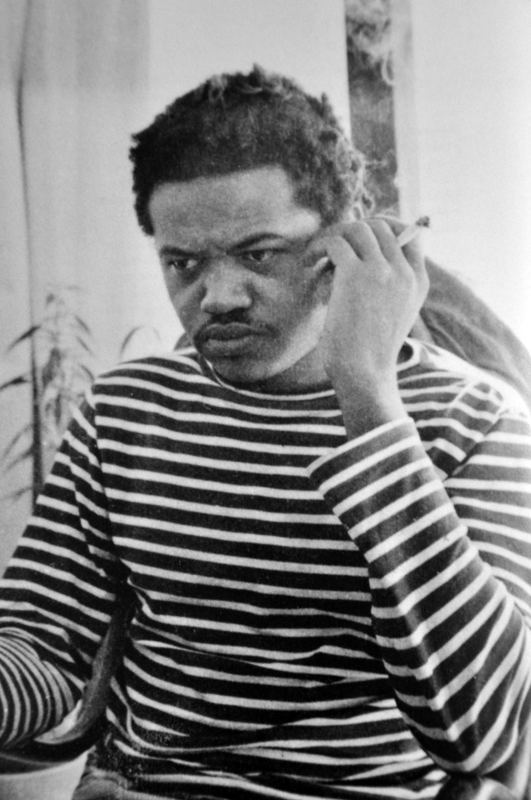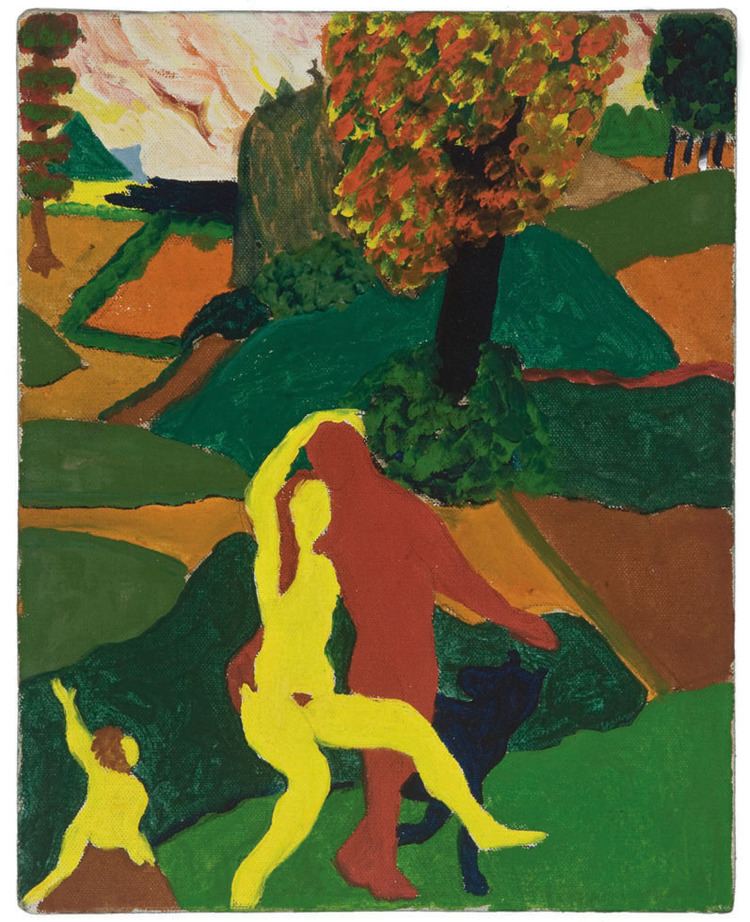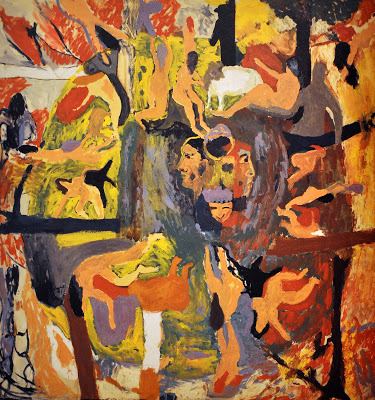Occupation Figurative painter Name Bob Thompson | Role Painter | |
 | ||
Full Name Robert Louis Thompson Artwork Cell, The Procession, Allegory Education | ||
Bob Thompson (June 26, 1937 – May 30, 1966) was an African-American figurative painter known for his bold and colorful canvases, whose compositions were appropriated from the Old Masters. His art has also been described as synthesizing Baroque and Renaissance masterpieces with the jazz-influenced Abstract Expressionist movement.
Contents

He was prolific in his eight-year career, producing more than 1,000 works before his death in Rome, Italy, in 1966. The Whitney Museum in New York City mounted a retrospective of his work in 1998. He also has works in numerous private and public collections throughout the United States.

Bob thompson drawings at steven harvey fine art projects
Life and career

Robert Louis Thompson was born and raised in Louisville, Kentucky. His father died in a car crash when he was 13, and Thompson lived with relatives who exposed him to art and jazz. He was briefly a pre-med student at Boston University (1955–56) but dropped out and returned to the University of Louisville (1957–58), where he studied painting under German expressionist artist Ulfert Wilke.

In 1958 he moved to New York City, where he formed friendships with jazz musicians such as Charlie Haden and Ornette Coleman while a regular at the jazz clubs "The Five Spot" and "Slugs". He also formed friendships with writers Allen Ginsberg and LeRoi Jones in addition to fellow artists Lester Johnson, Red Grooms, Mimi Gross, Marcia Marcus and Allan Kaprow, with whom he participated in some of the earliest Happenings. In 1960, he had his first solo exhibition at the Delancy Street Museum and later at the Martha Jackson Gallery where he had solo exhibitions in 1963–64, and 1965.

He married in 1960 and moved with his wife to Europe in 1961 after receiving a Whitney Foundation fellowship. They went to London, Paris (staying at the so-called "Beat Museum" hotel) and to Spain, where they settled on Ibiza. Thompson wanted to draw inspiration from the European Old Masters and perhaps also wanted to escape drugs. However, his drug use took its toll. He died from a heroin overdose following gall bladder surgery in Rome, Italy in 1966. While Thompson had a relatively short career before his early death, he still managed to complete about 1,000 paintings and drawings.
Artistic style
Thompson spent much of his time during his early career visiting museums and drawing inspiration from earlier art. One of his major artistic goals was to reinterpret themes and subjects from the Old Masters. By synthesizing Baroque and Renaissance masterpieces with the jazz-influenced Abstract Expressionist movement, Thompson was able to make the art of the past more relevant for contemporary - and particularly African-American - audiences. In his early career, he typically painted large groups of figures in mainly earth tones.
In 1963, his focus shifted towards painting single, central events in brighter colors. He began to paint more expressively, combining traditional symbols and themes with his own imagination. Thematically, Thompson was inspired by the dichotomy of good and evil as well as the relationship between men and nature. His figures are often multi-colored and flat and reflect well many of the basic elements of the Abstract Expressionist movement.
